Ancient and International Haggadahs |
If you wish to purchase any of these books, click on either the title or the book cover to be directed to Amazon.com. As a warning, I have put up pictures of the book covers to give you somewhat an idea of the style of each book (I know, I know. "Don't judge a book by its cover") so the pages may load slowly, depending on the speed of your internet connection.
If this page came up without frames, Click here to see the complete website
For stories about Pesach, go to the Passover Page
For more books about the Exodus, go to the Stories About Moses, Miriam, and Aaron Page.
Other Pages of Interest:
Haggadahs (General) |
Children's and Family Haggadahs |
Haggadahs for Women |
Haggadahs for Vegetarians |
Sephardic Haggadahs |
Russian Haggadahs |
Ancient and International Haggadahs |
Passover Guides and Haggadah Supplements
Siddurim for Children |
High Holiday Mahzors for Children |
General Children's Prayerbooks
Jewish Children's Books |
Bar Mitzvah Books |
Jewish Parenting Books |
Jewish Music for Children |
Jewish Children's Videos |
Jewish Jewelry
For stories about Pesach, go to the Passover Page
For more books about the Exodus, go to the Stories About Moses, Miriam, and Aaron Page.
Other Pages of Interest:
Haggadahs (General) |
Children's and Family Haggadahs |
Haggadahs for Women |
Haggadahs for Vegetarians |
Sephardic Haggadahs |
Russian Haggadahs |
Ancient and International Haggadahs |
Passover Guides and Haggadah Supplements
Siddurim for Children |
High Holiday Mahzors for Children |
General Children's Prayerbooks
Siddurim for Children | High Holiday Mahzors for Children | General Children's Prayerbooks
Jewish Children's Books | Bar Mitzvah Books | Jewish Parenting Books | Jewish Music for Children | Jewish Children's Videos | Jewish Jewelry
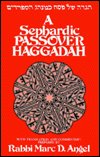
A Sephardic Passover Haggadah By Marc D. Angel |
Translation and commentary by Rabbi Marc D. Angel includes a running commentary drawn from the teachings of Sephardic ages throughout the generations.
|
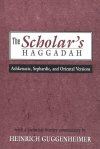 The Scholar's Haggadah: Ashkenazic, Sephardic, and Oriental Versions By Heinrich W. Guggenheimer |
In this unprecedented masterwork, The Scholar's Haggadah: Ashkenazic, Sephardic, and Oriental Versions, Heinrich Guggenheimer presents the first Haggadah to treat the texts of all Jewish groups on an equal footing and to use their divergences and concurrences as a key to the history of the text and an understanding of its development.
The Seder (the ceremony of the Passover night) is one of the most universally celebrated rituals among Jewish families, for what it commemorates–Jewish freedom from bondage–is the glue that bonds all Jews together, traditional and modern, Ashkenazic and Sephardic alike. In the Book of Exodus the Jewish people are instructed to tell their children of how God brought the Israelites out of slavery from Egypt, and thousands of years later this timeless tradition remains an immutable factor in Jewish homes on Passover night. While many commentaries have been written on the Haggadah during the last one thousand years–most delineating the spiritual meaning or the ritual details of the Passover ceremonies–few historical investigations have dealt with texts that are not wholly Ashkenazic. Available for the first time to the reader is a Haggadah that includes the customs and ceremonies of not only Ashkenazic and Sephardic Jewry, but of Yemenite Jews as well. Additionally, the author provides a commentary that not only offers a key to the roots of the Passover ceremonies and an introduction to the thought and practice of talmudic-rabbinic Judaism, but also presents a history of the development of text and practice of the Seder celebration. While Yemenite Jewry still follows texts and prescriptions of Maimonides practically in their original form, unchanged for at least 800 years, European Ashkenazic and Sephardic practices have undergone many changes. While the history of Yemenite Jews is riddled with oppression and migration, the Moslem rulers of their country never extended their persecutions to Jewish books. On the other hand, the history of European Jews is dominated by continuous pogroms, beginning with the first crusade, and a permanent war of the Church against Jewish learning that resulted in many public burnings of the Talmud and rabbinic treatises. Heinrich Guggenheimer has produced an essential work, valuable to the historian, scholar, layman, beginner, and any Jew who wishes to carry on the tradition of a people, who, by observing that tradition, commemorates the very essence of Jewish freedom. |
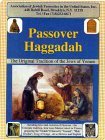
Passover Haggadah: The Original Tradition of the Jews of Yemen By Ben-Tsur Chaim |
Yemenite Jews have contributed their full share to the development of the Jewish religion and culture preserving ancient religious ideas and practices. Many Yemenite Jews are great scholars, individuals who know by heart the Torah, the prayers, and large portions of Jewish literature.The Yemenite community is the most literate of all Jewish communities when it comes to the Bible and the prayers. Famous scholars assert that to understand the laws of the Mishna and Talmud, one has to live with Yemenite Jews.Yemenite Hebrew has been acknowledged by some researchers to contain the most ancient phonetic and grammatical features dating back to the early days of the first Temple. Ancient Hebrew manuscripts were often copied and preserved in Yemen. The Jewish Yemenite prayer book (the "Tiklal") is completely different from the Ashkenazic and Sephardic prayer books. Rambam (Maimonides) always referred to the text in the Yemenite prayer book. Yemenite culture is a way of life affecting every activity at home, school, or in the synagogue. Its tradition is richly represented in art, crafts, music and literature. Yemenite garments, jewelry, embroidery, woven fabrics, carpets, and prayer shawls are famous for their high quality. Yemenite melodies and singers are today the most prominent elements in Jewish and Israeli music and the "Yemenite step" is danced in many Israeli folk dances. Our wedding customs, including the "henna" ceremony, are nowadays accepted and combined with Sephardic and Ashkenazic rituals.
This book, Passover Haggadah The Original Tradition of the Jews of Yemen,is the only Yemenite Haggadah with English translation and has special features:
|
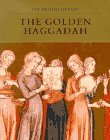
The Golden Haggadah By Bezalel Narkiss |
Twelve of the greatest works of all time are collected in this dazzling tribute to artistic genius. Bosch, Monet, Gauguin, van Gogh, Botticelli, Degas, and other masters are represented.
The Golden Haggadah (written and illustrated in northern Spain around 1320) is one of the outstanding works in The British Library's world-renowned collection of Hebrew manuscripts. Traditionally the most richly decorated of all Jewish prayer books, the Haggadah is used by Jews around the world in the celebration of Passover. This book presents a superbly illustrated account of the Golden Haggadah's creation and history and reproduces all the major illustrations in color. It provides an accessible introduction to Hebrew script art as well as an authoritative commentary on the Golden Haggadah's content and illustrative scheme. |
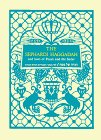
The Sephardi Haggadah: With Translation, Commentary and Complete Guide to the Laws of Pesah and the Seder By Rabbi Jonathan Cohen |
Haggadah commentary and the laws of Passover and the Seder, based on the 'Shulchan Aruch' and contemporary Sephardi authorities. With diagrams and richly colored plates.
|
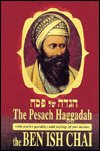
Ben Ish Chai Haggadah By Shalom Meir Wallach |
The text of the Haggadah in both Hebrew and English, with stories, parables, and sayings of Hacham Yosef Hayyim of Baghdad.
Here in America, we Jews have all blended together so well that many of our own customs - especially for those not from Europe - have almost been forgotten. What an important contribution it is, therefore, that that Iraqi Jewish Haggadah is now avaiable in English and Hebrew. This is a Haggadah that every Iraqi Jewish family in America (or any English-speaking country) should have! |